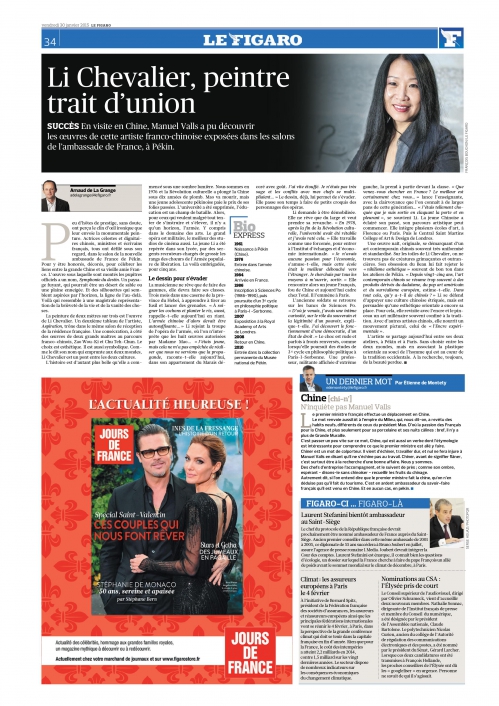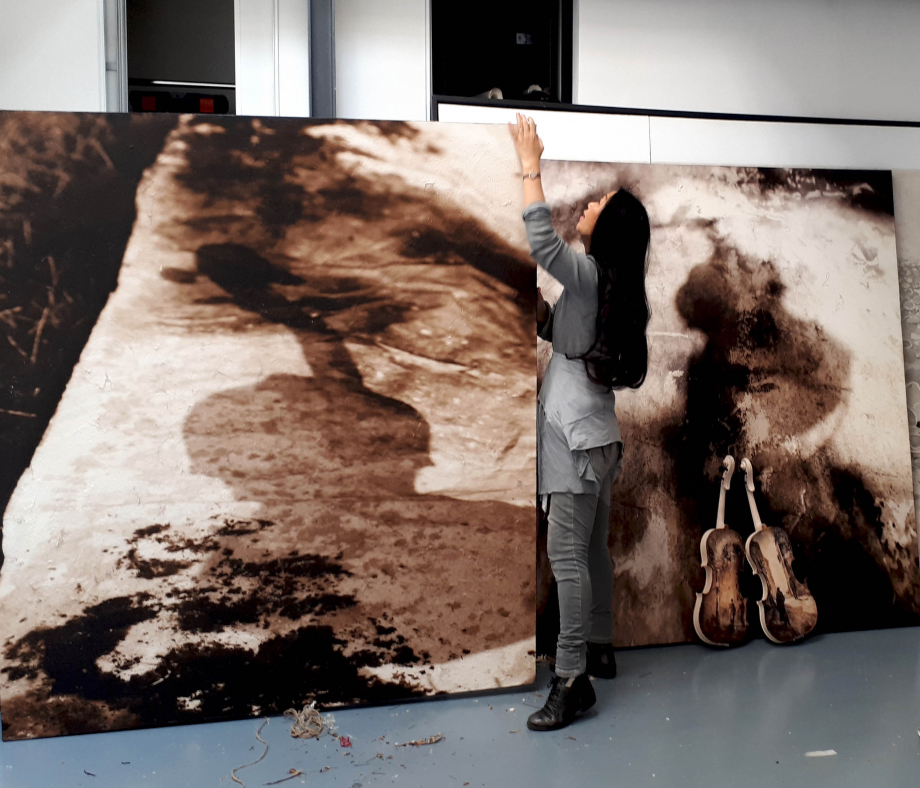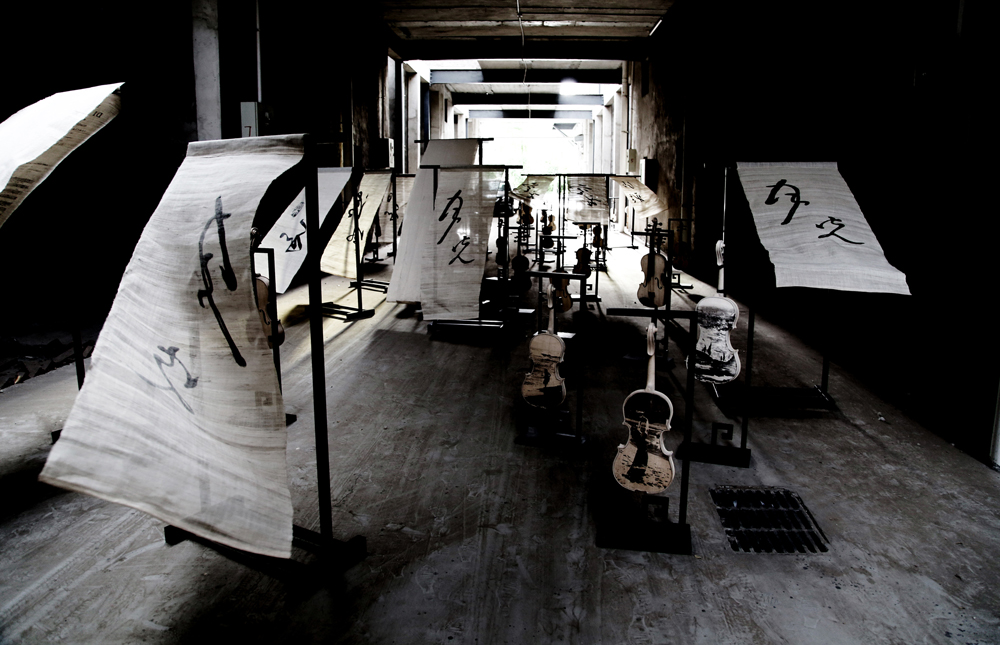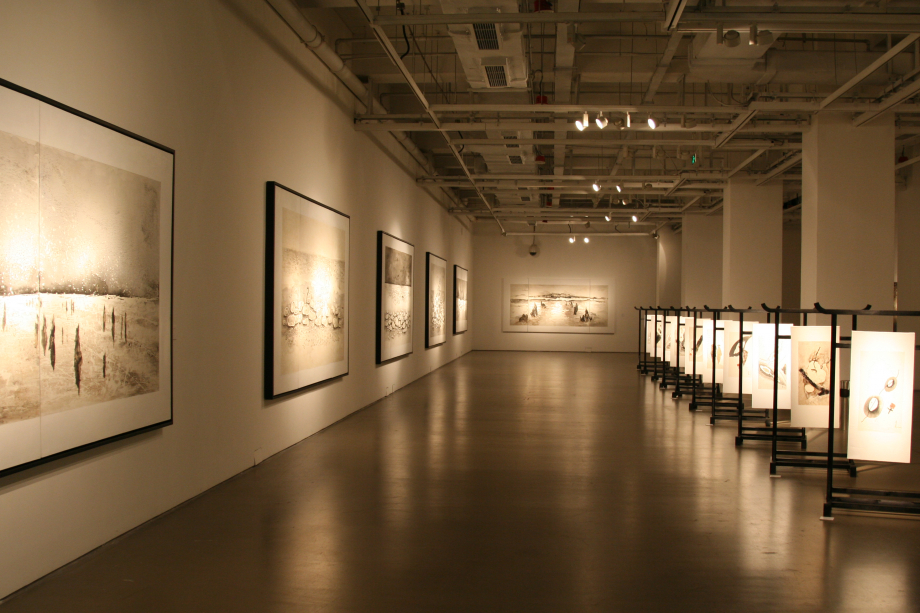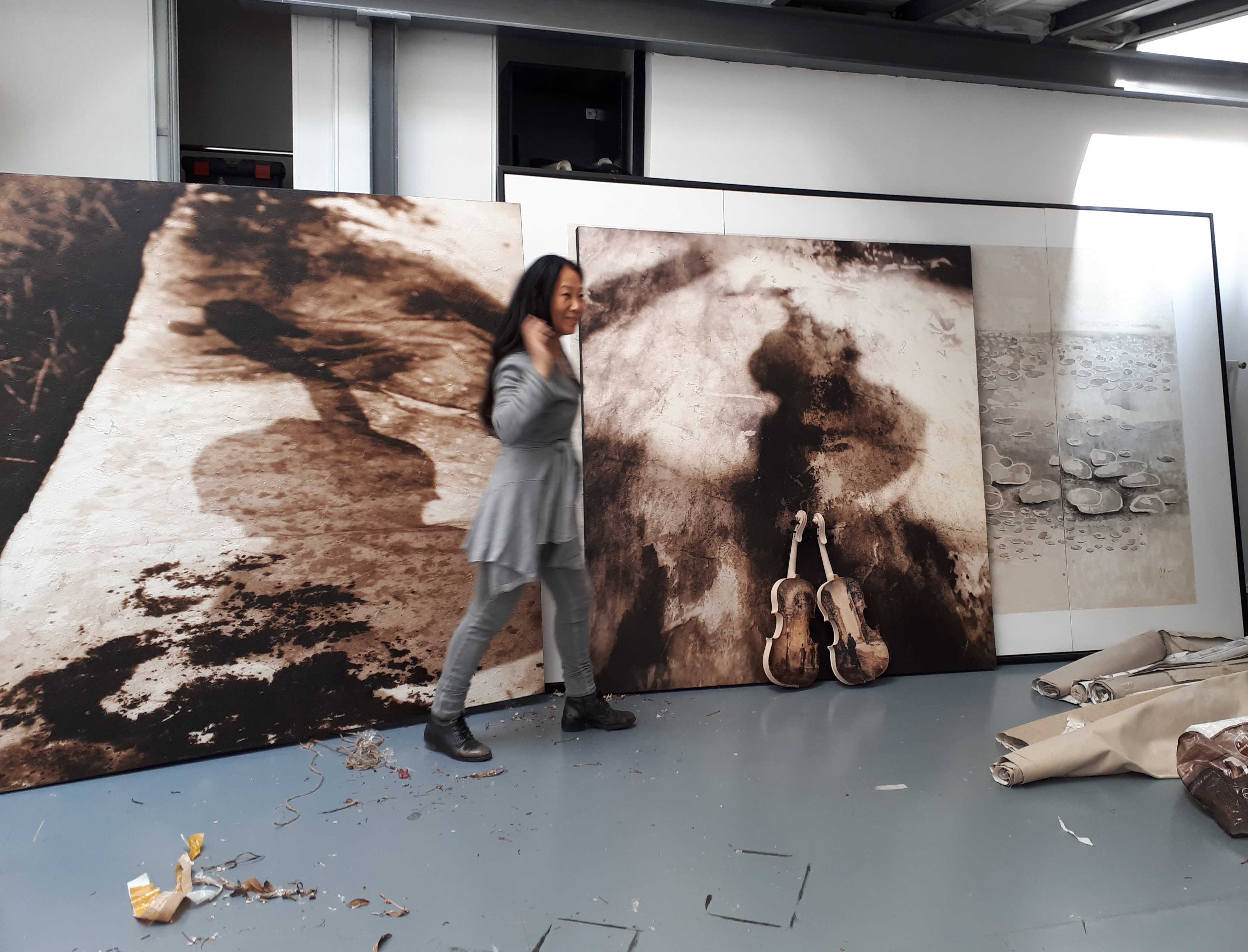Press room
Press room
CRITIC AND INTERVIEW
<In search of lost beauty > Beaux Arts Magazine May 2014 / <Innovation destructrice Luc Ferry 2014 / <Li Chevalier, cultural blending > Preface Alain Juppe 2014 / <Ink and Between> François Jullien 2014 / <Contemplating the Orient> Alexandre Ziegler 2010 / <Under the Inspired gaze of Chevalier li> le Figaro. Arnaud Lagrange 2010 / <Contemplating the Orient> Preface French -China cultural festival Frederick Mitterrand 2010 / <voice of life according to Li Chevalier> Attitude France 2012 / <li Chevalier Two paintings for the Embassy of France> the attitude of France 2011 / Le Petit Journal Beijing <an artist on the strings of sensitivity > 2013 / <li Chevalier Interview > 50th China-France 2014 French Institute / text Denis Lavalle catalog Shanghai Museum 2011 / text Remy Aron for the catalog of the National Museum of Fine China 2010 / text François Michael King Pellec catalog for the National Museum of Fine Arts 2010 / <The appeal, in the landscapes of Li Chevalier> Antonia Debruelle / <Steles light> Preface Marc Fontana catalogue National Library of China in 2012
PRESS
<Li Chevalier painter of trait-union > Le Figaro Culture / <Li Chevalier France Chine 50e > French International Radio / <Li Chevalier, art and fusion > France Southwest Daily 2014 /Bordeaux women < Quand li Chevalier décroche>Dec.2014/ <Aesthetics and Philosophy> <China Radio International 2014 / <At the Crossroads of the West and East> Europe Time 2014 / <Global Time Celebrity > Radio 2014 China International /<Interview li Chevalier > Site de L'Institut Français / <li Chevalier- painting music> Sciences-Po alumni_magazine 2013 / Guide Beijing Louis Vitton 2013 / <Artiste sur les cordes de sensible> Le petit journal de Pékin 2013/ <li Chevalier -Est and west> Art vision 2013 / <Silent sounds of cross cultural art> 2013 China Daily / <Visual symphony> Journal of radio and Television Beijing 2013 / <My little vanity> Cosmopolitan magazine 2013 / <Flying high> China Radio International / <The Stele of Light> Association Victor Segalen 2012 / <Mind "vomit "creativity> Daily 2012 people / <Ink and aesthetic Chan> Modern weekly Magazine 2012 / <New Chinoiserie> Global Times Shanghai 2012 / <li Portrait Chevalier> Star and Light magazine 2012 / <Walk east to west> Air China Magazine 2011 / <Visual Symphony> Global Times 2011 / <Gaze and Inspiration> life and Style Magazine 2011> / <A manifesto of the artist> Club Magazine 2011 / <Beijing born artist back to conquer China> China Daily 2010 / <Portrait artist> Global Times 2010 / <hybrid vision of Li Chevalier spans two continents> Global Times 2010 / <Weman artist> Beijing Radio / <Between black and White> Beijing Evening News 2010 / <L'Orient in the language of contemporary art> Hongkong Takungpao 2010 / <The voice of silence> Art Guide Magazine 2008 / <On beauty> Non Art Magazine 2009 / World Art Magazine 2010 / < China Expression > Art wage magazine 2011 / <li Chevalier portrait > Star 2010 magazine art / Investigating Dashanzi> the Cross 2008 / Ku magazine art / Art and Finance / China Art Weekly / <A painter who loves singing> / Gulf Times 2005 / Al Shark 2004 / At Leisure Magazine Qatar 2003 /
LE FIGARO CULTURE
TV
France 3 Gironde (Bordeaux Submarine Base) 2014 / China Central Television Channels 6 (Joy Palace Gallery) 2014 / Beijing TV Channel Economics and Finance ( Visual Symphony )Stat Opera 2013 / Blue Ocean Channel (Portrait artist) 2012 / Shanghai East Channel (National Museum of Shanghai) 2012 / Shanghai Star Channel (National Museum of Shanghai) 2012 / China Central Television 4 (Portrait artist Poetry and painting) 2011 / China Central Television Channels 9 (National Museum of Fine Arts of China) 2010 / China Central Television Channels 6 -2010 (Today Art Museum) / China Education Channels 2010 (Today art museum) / Beijing TV Channel life (National Museum) 2010 / Beijing TV Canal Vie 2010 / Painting and calligraphy Channel 2011 / Art and Fortune 2010 channel / Art New China net 2010 / Qatar National Tv 2003.2004 / Yachang art news / 99 art news / world art news / shanghai art museum official web / Official site of the National Museum of Fine Arts / Official Website of National Opera of China /
LI CHEVALIER INTERVIEW
ASIAN CONTEMPORARY ART
Li Chevalier was born in 1961 in Beijing, China. She uses a mixed technique in her works, mixing the technique of Chinese ink with the Western support that is canvas. Between abstract and figurative art, she transposes her philosophical and existentialist reflections into her paintings.
What was your relationship with art during your childhood?
I grew up during the Cultural Revolution, which began in 1966. The atmosphere of the so-called cultural revolution turned primarily against the intellectuals and the culture they represented : all the cultural heritage of the past had to be destroyed, and any Western influence had to be squeezed out. Thus, the wife of President Mao eliminated all the repertoire of the old Opera. It was replaced by eight revolutionary operas, which looped every day on television and radio. We lived in a sort of cultural « monody », characterized by a unique thought, a unique voice. The country was no longer producing, and the people helped by creating shows to sing the glory of the Party and Mao. Music, singing, dancing and performances were a big part of everyday life. As a child, I felt a real fascination for these operas, which I dreamed of being part of. At the same time, I took drawing and ink painting classes with a lot of diligence and passion. In 1976, at the age of 15, I was recruited by the army to sing. The same year, Mao passed away and the reform began: the country opened, and opened culturally. Gradually, the university also opened, with the possibility to follow graduate studies. I then left the army after 5 years of work and I took the entrance examination test of the university. I succeeded, despite my loss of high school years, to integrate the University of Economic Relations and International Business in Beijing, which trained future officials of the Ministry and various embassies. I was not interested in international finance courses and I spent my time singing and collecting books of philosophy and foreign literature, which were banned during the cultural revolution and reissued at that time. In this university, I had access to international journals and courses given by foreign teachers in English. It was a window to the world. The university offered me this opportunity to expand my vision of the world. You came to France to study political sciences and philosophy.
What encouraged you to study art afterwards?
The 4 years of studies at Sciences Po and the postgraduate degree in political philosophy gave me the opportunity to develop my critical thinking. I went there because I was looking for answers to my personal questions. In parallel to my studies, I sang in the Orchestre de Paris. Knowing that I could not pursue a career as a great vocalist in Europe because of the singing style that I had been taught in China, too different from this one, I turned to my second interest: painting and drawing. Tell us about your beginnings as an artist. In 1990, I discovered the city of Venice in Italy. I met many painters: it shook me. Italy had a key role in my career, for the richness of its images and the artistic heritage of the country that stunned me. I made regular trips to Venice and then to Firenze. In Siena, I met a Dominican priest of the Basilica; I then started Italian language courses and drawing classes. The first years of my apprenticeship in oil painting were of course the reproduction of masterpieces of the Renaissance. I have made constant trips back and forth to Italy since the beginning of the 1990s until today.
How has your work evolved?
In the career of an artist, there are moments of learning, lack of progression, slow shifts towards an evolution but there are also moments of revolution. In 2003, I went from oil painting to mixed media painting using Chinese ink. In 2010, I started my first installation. Why are you interested in mixing techniques? In 2003, I presented a bright red figurative painting that had a surrealist spirit at the French Salon of the National Society of Fine Arts. Judged too close to European surrealism by my master Pierre Henry, I decided to explore other paths. In 2004, I started working with ink, following a mixed media workshop at Saint Martins School (London). At the end of this first experiment, I presented a collection of ink on canvas works, in a quite experimental spirit. It has elicited many comments: never before has been seen this link between the typically oriental medium that is ink, coupled with a form of European expression, on canvas. However, there is a great distance between these two techniques.
Li Chevalier in her studio in Ivry-sur-Seine May 2018
What is the importance of philosophy and politics in your work?
I never had a professional interest in political science or philosophy, my interest came more from personal researches. I was looking for answers to my questions. My postgraduate degree director in philosophy himself acknowledged: « You came here to ask questions and to look for answers, not a diploma ». He gave a very good mention to my postgraduate degree and invited me to pursue my doctoral studies. Today, my canvases are filled with question marks. In a more political approach, I was able to question the legality of a political regime or the value of men. This type of question no longer inhabits me, I feel more challenged by a more existential or metaphysical horizon. Let me quote some titles of my works: Beyond the horizon (2010); The horizon is a precipice. The second is clearly more pessimistic : it is a line drawn on the horizon that is more or less distant in our life, the one that awaits us and watches us all. It is a line that we must cross alone. It refers to this anxiety and the feelings of loneliness that « inhabits » the man.
What is the influence of your Chinese origins (culture, cultural revolution …) and the influence of your experience in France and in the West in your work?
My work presents itself as a language of encounters. A « plastic » meeting first : as I mentioned, it is the meeting between the Chinese ink, typically Chinese, with the canvas, a typical Western support. This media revolution gave me the opportunity to play with all the mixed media techniques received from the West, allowing the creation of textures by gluing or by embedding sand on the surface of the canvas for example. The meeting also takes place through different thematics and aesthetics. I would like to quote a passage from the text of the Museum of Contemporary Art in Rome’s curator, Claudio Crescentini, which, in my opinion, sums up my approach very well: « Li derives and moves away today from the stereotypes of oriental preciousness, which she transcends by her gestures, her mixtures, her eclecticism and her pathos. » I think that the word « pathos » here is a key word that refers to this jump that I made towards the west, because oriental art, whether pictorial or musical, has always been faithful to its vocation, namely to « feed life in a harmonious way ». It desperately tries to get away or to avoid suffering, while the West does not hesitate, and I would even say, loves to cultivate all the dimensions of the soul in order to reach an expression of great amplitude and a strong emotional impact. In the word « sublime » one already hears the word « pathos » and these exaltations of passion such as loneliness, terror, the fear of death, even in a contemplative sphere, introduces a kind of painful dissonance that attracts me and that is close to me. In a certain sense, the impact of this Western aesthetic on my mental state was decisive and with no possible return.
There is an influence of Asian aesthetics in your work: are you rather in an approach of rupture or continuity towards this Asian influence?
I try to make a kind of peaceful revolution, by inventing an art form based on an inheritance, but that also is in the tune with its time. Many contemporary artists or musicians also share this point of view. I can quote the composers Thierry Escaich, Karol Beffa, Peteris Vasks and Avro Pärt: their music does not deny the past but is at the same time very powerful, innovative and contemporary.
Is your work as much known in France as it is in China?
I have an international career. I lived long periods in England, China, Indonesia, Japan, Qatar and the Emirates. My stays were long enough to create a network there. My work is mainly collected by institutions in China, and more by private collectors in Europe. In China, my works are part of the permanent collection of the National Museum of Fine Arts of China, the Museum of the National Opera of China and also the French Embassy in Beijing, a symbolic place of diplomacy, exchanges and crossroads between these two countries. In France, my first major monographic exhibition took place in 2013, in Bordeaux, on the occasion of the 50th anniversary of France-China diplomatic relations. This exhibition, which had a great impact, resulted in a collection of my artworks by the Bernard Magrez Institute. My works are very present in large Italian artistic spaces, particularly at the Museum of Contemporary Art in Rome. They are currently on display at the Siena Santa Maria della Scala Museum complex.
Concert-Exhibition « Visual Symphony », National Beijing Opera, 2013
Do your works receive the same reception in the West and in China?
I would say there is a common reaction. On both sides, those who have never been exposed to my art, so closely linked to my career, feel a kind of singularity in front of my work . To conclude, I will quote a criticism of Gerard Xuriguera: « Li Chevalier did not give in to the temptation to draw a bridge between East and West: she created a world, her world. »
Do you show the same type of work anywhere in the world? Or do you adapt the selection of your work according to the country where it is presented?
The choice of works will be different depending on whether they are shown in galleries, fairs or museums. In the galleries the approach is rather commercial, whereas in a museum the artist can reveal all of his/her creation in a more coherent way. I insist more on an institutional presence, because they are places that give all the possibilities to the artists in their search of emotional impact, by deploying their capacities of scenography. The exhibition itself becomes a work that is created locally and adapted to each place and occasion.
Exhibition « The poetic East » in 2011, Shanghaï National Gallery
What are your next projects? I am exhibiting this summer at the Siena Museum. I chose to present two multimedia installations that I made, accompanied by two musical pieces of Karol Beffa.
Do you have a dream, an aspiration, a particular ambition …?
Today my dream would be to have a strong presence in major international art platforms. And also that in 200 years, when my grandchildren will tour museums in the world, or on the Internet, we can tell them: « Here are the paintings of your grandmother ». I am looking for a dialogue with the future in order to transcend time.
Interviewed by Camille Scheiblin and Lou Anmella-de Montalembert, April 2018
années
http://http://aca-project.fr/portfolio/li-chevalier-artist/
Interview with li Chevalier
ARTVIATIC
An uprising above and beyond oneself, above and beyond everything, a miraculous uprising that is at the same time acquiescence, an acquiescence without limits, soothing and exciting, a torrent and a release, a contemplation, a craving for more than release’ – Henri Michaux, L’Infini turbulent (1957) When you push open the door to Li Chevalier’s studio, the enthusiasm of these lines taken from the great French poet can’t fail to resonate with the same intensity. An artist born in Beijing and imbued with the culture of her native country, she has constantly embraced other cultures, from Paris to London, from Florence to Dubai, diluting them in order to extract their quintessence. And ‘to embrace life’, as she says, in the direction of other horizons… Science Po in Paris and philosophy at the Sorbonne, art schools in Florence and Paris and then a degree from Central Saint Martins in London, have given her a cosmopolitan outlook and – from her numerous exhibitions – international recognition: at the Museum of Contemporary Art in Rome, National Art Museum of China, the Today Art Museum in Beijing, the China Art Museum in Shanghai, the China National Opera and finally in the context of the fiftieth anniversary celebrations of the Franco-Chinese relationship. Two major paintings by the artist have featured in the French Embassy collection in China since 2011, alongside works by Zao Wou-ki and Chu Tequn. Her work is part of the permanent collection of, among others, the National Museum of China, the China National Opera, the Bernard Magrez Institute…
NEWS OF THE ART WORLD:
Starting with the two words ‘link’ and ‘ink’, which seem to be key words for you, could you explain your work in terms of East and West, of figurative work and abstraction?
LI CHEVALIER: I must immediately pay tribute to François Julien, the famous sinologist who devoted a huge number of books to Chinese pictorial art. In the course of an interview about the emergence of contemporary ink painting in which I presented my own work, it was he who used the words ‘link and ink’: this title that he gave me for a potential exhibition perfectly fits my situation, my search and also myself as an artist. Link because I was born in Beijing and came to France in the 1980s. I have lived since then not only between China and France but also between Asia and Europe. I’ve lived in Indonesia, Japan, Qatar, then back to China, followed by 2 years in England for my studies and finally multiple trips to Italy. Having grown up in an aesthetic environment based on the art of calligraphy and traditional ink painting, I discovered Japan when I was an adult following a long stay in Europe and this encounter with Japanese culture aroused a very strong feeling of nostalgia in me. I had the impression that I was in the setting of a classic Chinese novel, a place where my ancestors had lived. It was as though an ancient culture was reappearing that had been lost underneath ideological destruction. Japan most certainly enjoys the influence of Confucian culture on a pictorial level, on a calligraphic, poetic level…
The landscapes of the great deserts and infinite space also seem to inspire you…
Yes, the Middle East is my second place for inspiration. When I stayed in Qatar, I introduced the sands into my painting on a massive scale. When you go into the desert there is the sea flowing alongside the dunes, both flawless, spread out before you, a sort of expanse, of dispersal, of infinity… These numerous journeys and extended ‘intercontinental’ stays give me the opportunity to live between cultures… I constantly return to Italy because Italy is a sanctuary of beauty. There, the beautiful is sacred. During my last stay in Rome and then Tuscany in 2017, I saw 3 or 4 exhibitions which had beauty in the title. I think it is regrettable that in certain countries, including France, the word ‘Beauty’ seems to be a term if not forbidden then at least incongruous when you use it in the context of art. Championing beauty in art is almost synonymous with a reactionary act refusing all change. As though art could only change by heading towards ugliness. The cult of conceptual art forces us to reject aesthetic emotion, the poetic, considering them to be antiquated and insipid.
And ink is connected to this idea of ‘link’?
Absolutely, traditional ink painting combines with water. It can’t manifest its beauty and all its subtleties without being diluted. What counts most in this art form is not only the contrast between the two extremes of the blackness of the ink and the clearness of the water, but above all the interpenetration of these two poles that gives rise to a thousand shades of grey. The subtlety of the grey places it perfectly within the idea of ‘Link’. Calligraphy and ink painting are the most characteristic art forms, the most typical of Chinese pictorial art, practised in every family. Within it, one can distinguish several schools, including the academic school and the school for scholars.
Do you consider yourself a scholar?
I don’t know that I am worthy of the term scholar, which according to Chinese tradition is a master of poetry, music, calligraphy and pictorial art, but my paintings fall within the tradition of scholars’ paintings on several levels. A particular example would be the philosophical and spiritual tendencies of this type of painting, which is summed up by the dialogue between man and nature. I am thinking also of its proximity to poetry.
Is it the search for a lost ideal, like in idealist German philosophy, and more particularly in Romanticism, in the quest for an essential organic unity?
I notice a similarity between the European Romantic aesthetic and the poetic and pictorial art of the east. The great themes of European Romanticism, notably its proximity to nature, desire for isolation, exhilaration of solitude, nostalgia, reverie etc… all these themes are very present in oriental poetic and pictorial art. The difference is that in the east, these themes are treated with restraint and modesty whereas in the west they take on their full magnitude. As for my own painting, the search for a lost or forbidden ideal, as well as the violent feeling of schism generated by this quest, overruns the entirety of my work. Speaking of philosophy, I have never understood why I was so attracted by speculative philosophical thinking. It is undoubtedly linked to this sort of nameless violence that I experienced when I was young and the desire for rebellion. I am looking for an answer to this ‘why’! And this ‘why’ led me to collect all books on philosophy that could give me an answer. I should also say that during the Cultural Revolution, a child of 6 could already talk to you about the ‘dialectic’ of negation and the negation of the negation because it was one of the words buzzing around their ears from dawn till dusk. People talked to you about the dialectic materialism of Karl Marx, then of Hegel, Feuerbach etc..
Beyond philosophical heritage, European techniques also make their way into your work.
As you know, the Chinese contemporary art that is known in the west falls within the pure plastic tradition of European or American art, I’m thinking in particular of surrealism and pop art, and other forms of more contemporary art like conceptual art. The question is what will we do with Chinese traditional ink painting? Do we want to leave it rooted in tradition or can we also extract something from it? The idea is not to defend a cultural identity but to enrich this typically eastern artistic language in a fertile process of encounters; encounters and crossover. Faced with cultural standardisation, my path lies in trying to find singularity again.
Conversely, are you concerned with updating this technique in the contemporary world?
Born in the west, aesthetics as a systematic – or even scientific – study of beauty has never been a great Chinese preoccupation. If we compare the meanings of beauty, the thing that strikes me most is the absence of the concept of the sublime in Chinese philosophy. The principal aim of eastern art, whether pictorial or musical, is to celebrate harmony in order to nourish life and the feeling of peace. That is all very different from this aesthetic exaltation in joy and in pain that transports western artists....
To your next exhibition?
I am going to exhibit at the Museum Complexe in Siena, Santa Maria della Scala, from May to July. And in fact at the moment, the gallery is showing Ambroglio Lorenzetti, a painter from the Sienese school who was active between 1317 and 1348. It seems to me that Italian galleries are less sectarian in matters of style, trend or era, often showing a more universal calling. Politics separates but art unites. On this point I think France has things to improve on. Between the old and the new, between those who care about beauty and those would like to subvert it, interesting dialogues can take place. My last exhibition at the Museum of Contemporary Art in Rome was on at the same time as an Anish Kapoor exhibition.
Following Italy, we can only think about this relationship between sanctification and de-sanctification…
I don’t claim any allegiance to any religion: this is linked to my own experience, as I lived in a context where all religions were forbidden. But that didn’t prevent Mao from deifying himself, this son of Heaven. The concept of the sacred is after all a product of this thing that is almost untouchable, for which one can lay down one’s life. Whether it is in Italy or elsewhere, whether it is within religion or outside religion, the sacred is very present. What fascinates me is this sort of fervour towards a type of transcendence.
Would the recurrence of music, particularly in your visual symphonies, aim for this craving for the absolute, as Wagner was wanting in his total work of art?
I am a great lover of music from the Romantic and Post-Romantic era. It is in these works that I understand the word ‘sublime’. Listen to the opening of a piece by Wagner and you will understand what brings art to life. My work in paint has gone from a more peaceful period to a darker expression. I had devoted one of my dissertations in London to the subject of Nihilism and the Zen aesthetic. Today I am on the verge of abandoning reference to the concept of Zen because art is this thirst for the absolute. Without this complete fusion between the world and the artist which gives rise to vibrations, there wouldn’t be art. The trajectory of the artist is more like the via dolorosa of Jesus than the solitary path of a Buddhist monk.
Until you reach Dionysian art?
In my opinion the artist as a person, particularly as far as I’m concerned, is closer to Dionysus, this god of intoxication, than to Apollo; one day I am certainly going to do a work on intoxication and art, by the way.
But Apollo is definitely present in your work…
Apollo, god of harmony, comes into play in the area of lyricism. In the creation of art, in order to achieve something of beauty, I am loyal to the invariability of harmony in composition, and the contrast between light and dark. Do you position yourself within the rupture with regard to the revolution post Duchamp? I am on the opposite side from Duchamp and in relation to artistic legacy from the west or the east. I am on a course that evolves without rupture. I am waging a revolution without weapons, without guns, without knives, a humanist revolution, without abandoning all that has been inherited.

